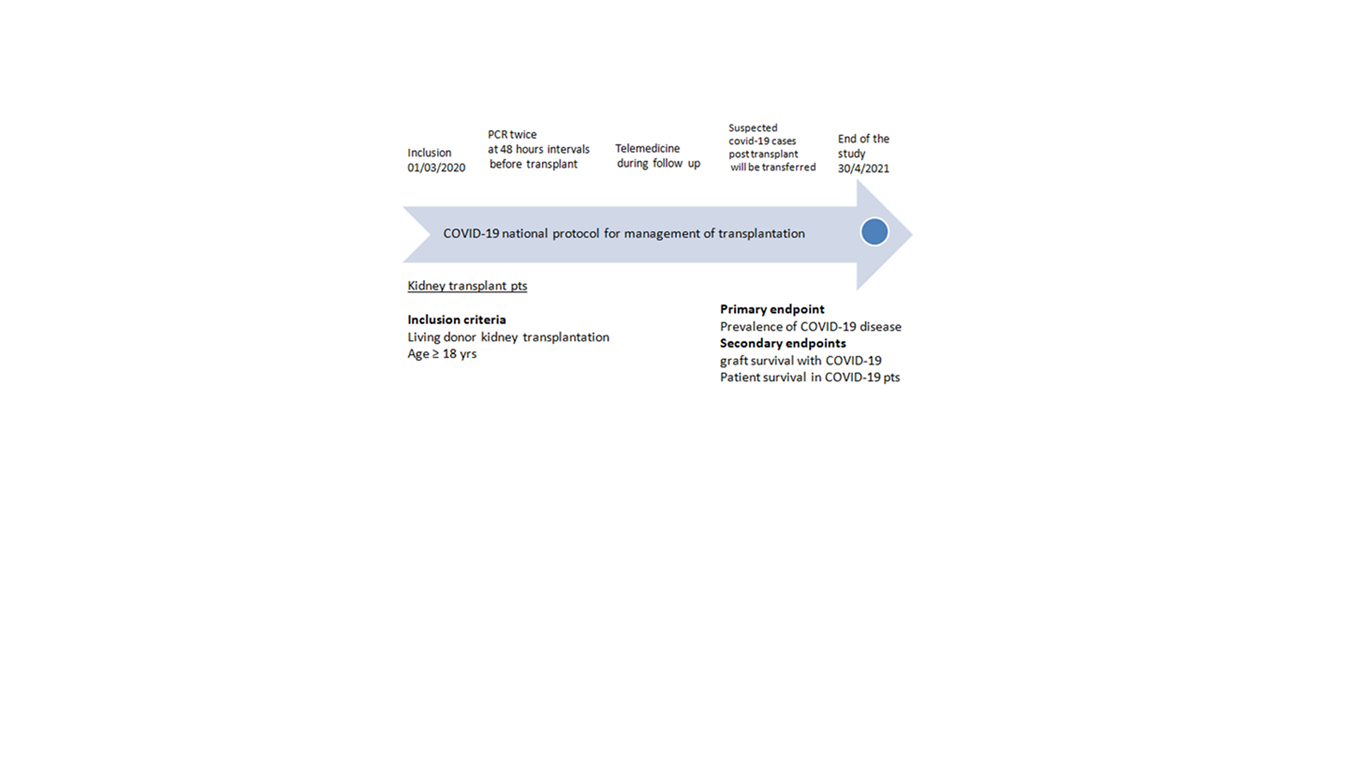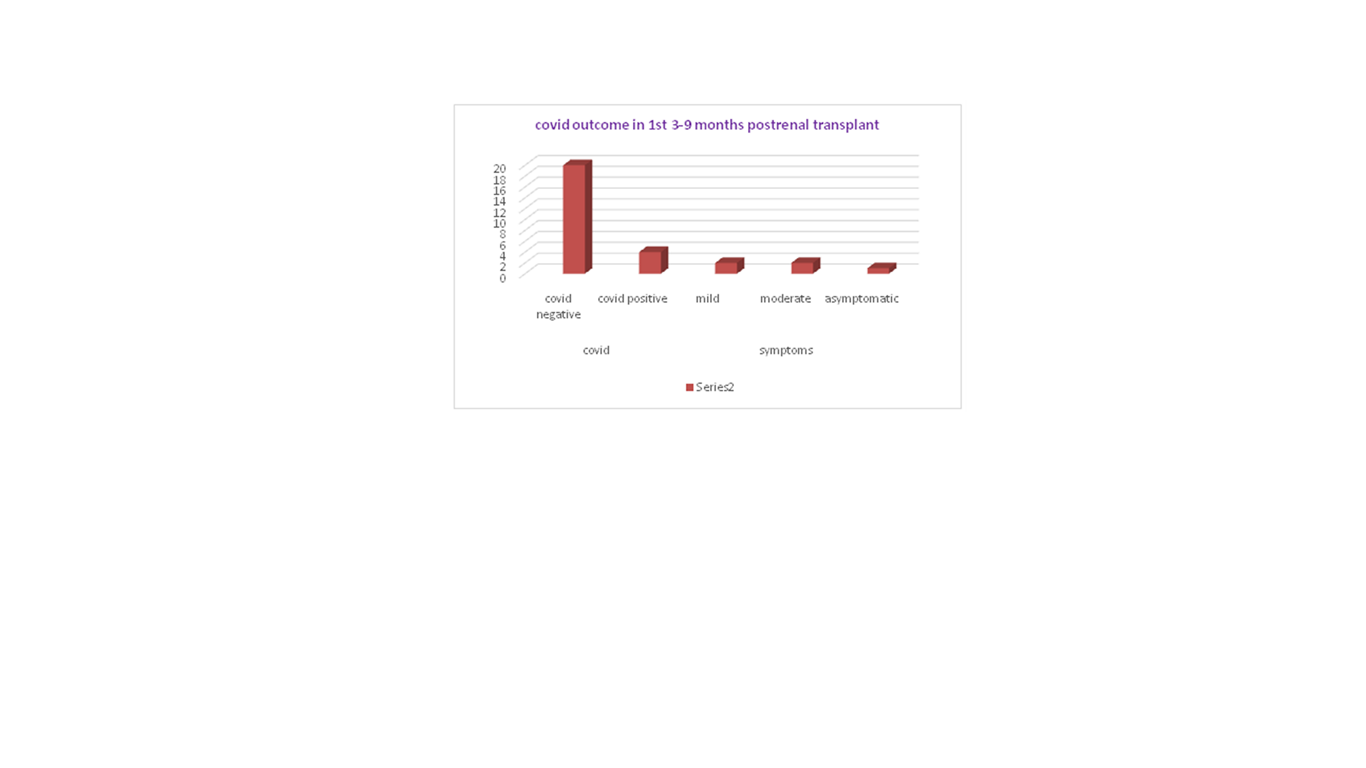Graft and patients’ outcome in kidney and simultaneous liver-kidney transplantation with infection control measures and immune suppression adjustment during COVID-19 era
Magdy Elsharkawy1, Ahmed Emara1, Abdelrahman Elbraky1, Shaimaa Abdelmegied1.
1Nephrology and transplantation department, faculty of medicine Ain shams university , cairo, Egypt
Introduction: Polices and precautions against Coronavirus disease of 2019 (COVID-19) before and after kidney transplants are highly warranted and modification of induction protocols may reduce the risk of infection. This study assessed the efficacy of COVID-19 prevention protocol with modification of induction at the time of transplantation and maintenance immune suppression during infection on renal graft and patient’s outcome in the first 3-9 months post-kidney transplant.
Method: This Study examined 24 patients who underwent live-related kidney transplantation including one simultaneous liver-kidney transplant from June 2020 to April 2021 after application of our hospital transplantation management protocol during the COVID-19 pandemic. Low to standard risk transplant recipients received ATG 3 mg/kg total dose over 4 days and high-risk recipients received 4.5 to 6mg/kg total dose over 4 days.
Results: The patient's immunological background was human leucocytic antigen (HLA) mismatched in 83.3 % (20 patients) ranging from 3 mismatched alleles. Panel Reactive Antibody (PRA) was positive in 41.6 % (10 patients) , 16.6 % (4 patients) had Donor-Specific Antibody (DSA) mean±SD (2956.12±1361.5) MFI. CDC crossmatch was negative in all patients. COVID-19 infection was detected by polymerase chain reaction (PCR) post-transplant in 16.6% (4 patients). 12.5% (3 patients) had got an infection with mild to moderate symptoms, and 8.3% (2 patients) had rising serum creatinine (2-2.5 mg/dl). 4.16 % (1 patient) had 2 infection episodes. 1st episode was asymptomatic and the 2nd was moderate symptoms (fever, mild pulmonary ground-glass opacity, and not needing oxygen support). Timing of post-transplant covid-19 infection was in the 8th to 9th week in 12.5% (3 patients) and 24 weeks in 4.16% (1 patient) with negative seroconversion 10-14 days and after 4 weeks of the diagnosis respectively. COVID-19 outcome: complete improvement with Immune suppression adjustment {raising steroid to 40 mg and reducing mycophenolate mofetil (MMF) dose 30%} and mortality zero percent. Graft outcome in 1st 3-9 months post-transplant: 95.8 % (23 patients) had good graft function {serum creatinine mean±SD (1.06±0.23) mg/dl}. 4.16 % (1 patient) had persistent serum creatinine 2.1 mg/dl post-COVID-19 infection and did not need dialysis. Delayed graft function was found in 4 patients (16.6%). 2 patients (8.3%) suspected rejection that improved in less than 1 week without graft failure or needing dialysis.
Conclusion: Infection control measures against COVID-19 with Lower induction doses and immune suppression Adjustment are effective and associated with good renal graft and patients’ outcomes with mild to moderate COVID-19 infection.



right-click to download
